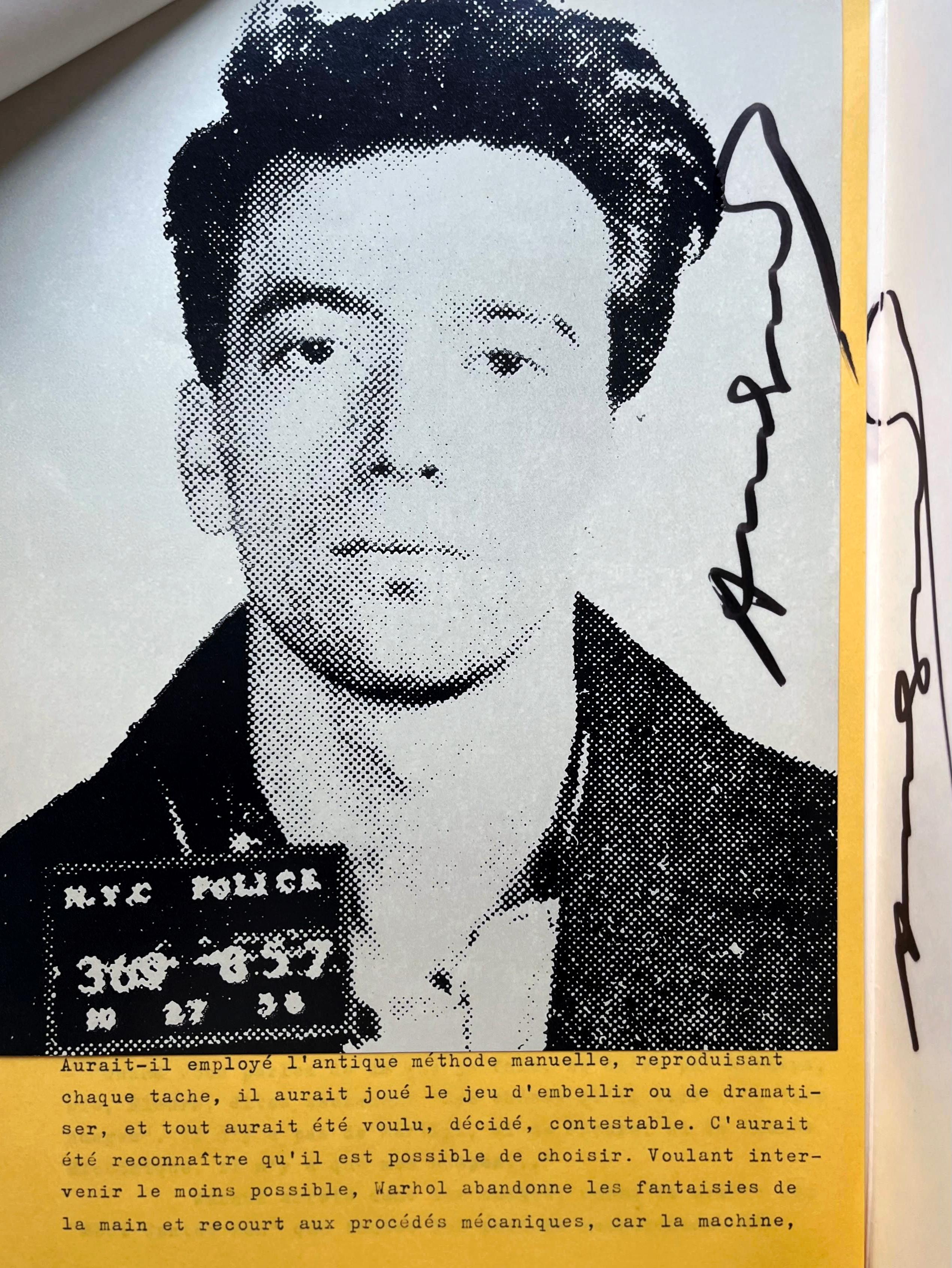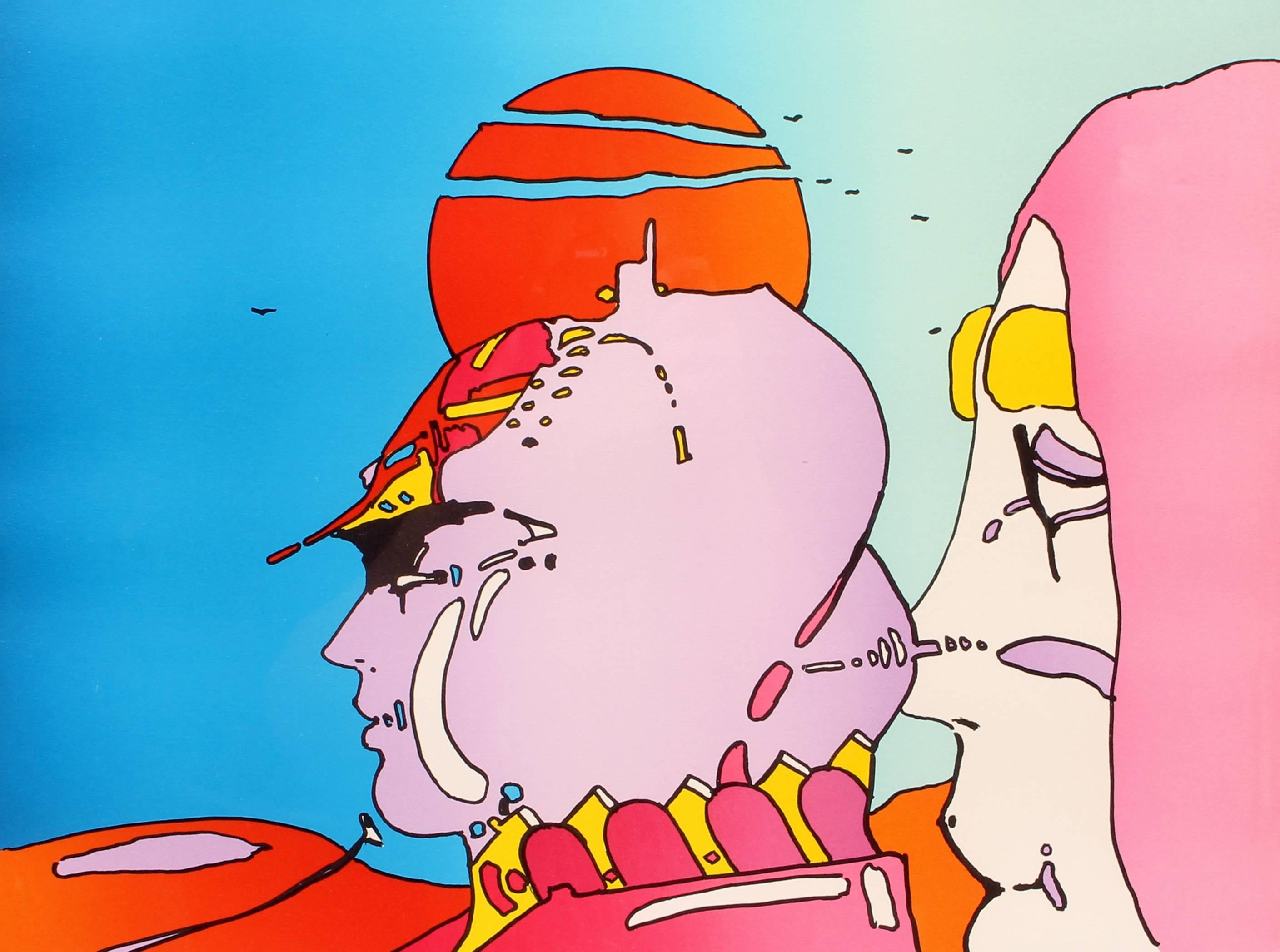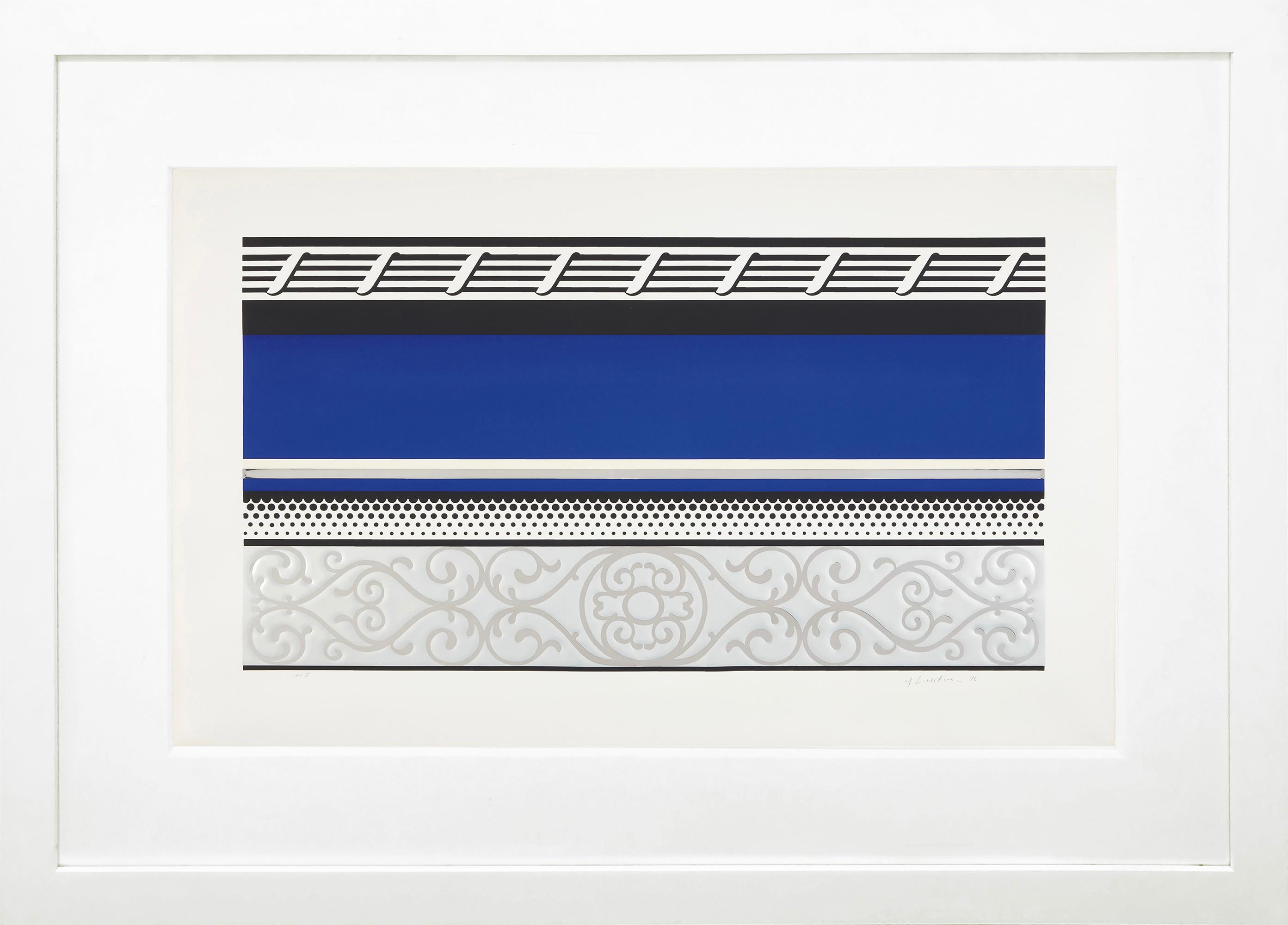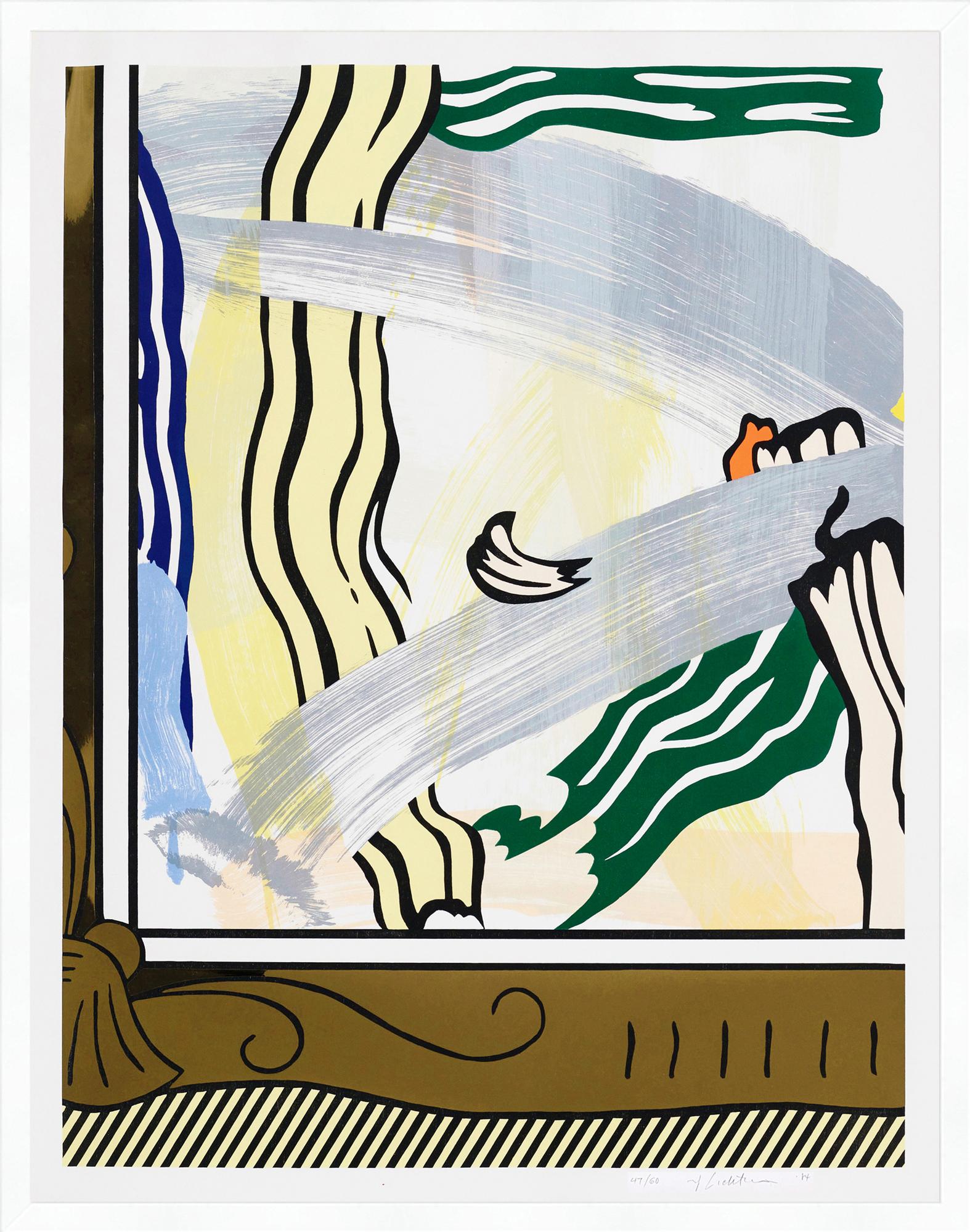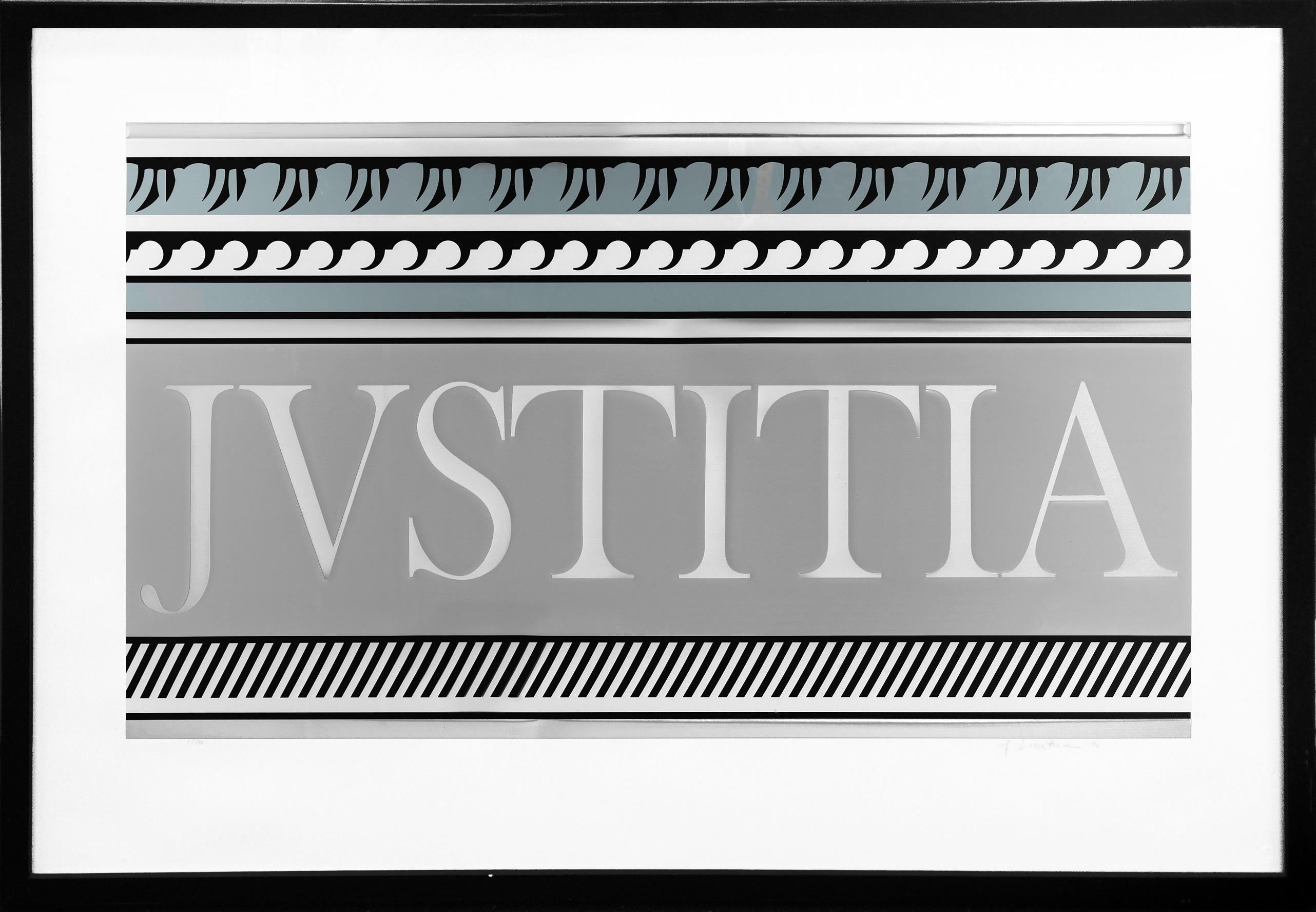Items Similar to Andy Warhol The Souper Dress (Andy Warhol Campbells)
Want more images or videos?
Request additional images or videos from the seller
1 of 10
Andy Warhol The Souper Dress (Andy Warhol Campbells)c.1965
c.1965
About the Item
Andy Warhol The Souper Dress c. 1965-1967:
Inspired by Andy Warhol’s Campbell’s Soup Cans, this dress was sold by the Campbell’s Soup Company in the late 1960s as a form of advertisement, combining the fad of paper dresses with Warhol’s popularizing of soup can images. The souper dresses were made of paper and sent to individuals through the mail after they sent in two Campbell’s soup can labels and $1.00. The dress could not be washed, and was therefore only intended to be worn once or twice. The souper dress is held within collections at The Metropolitan Museum of Art , and the Andy Warhol Museum, among others.
Medium: screen-print in colors on paper dress. c.1965-1967.
Approximate Dimensions: 37.5 × 22.5 inches
Very good overall vintage condition; fold-lines as originally issued; minor signs of handling & aging as commensurate with medium; some minor fraying at base; a fine well-preserved example.
Unsigned from an edition of unknown. Labeled, ‘The Souper Dress' at the neck. Scarce. Manufactured by The Campbell Soup Company c.1965-1967.
Literature & references:
The Costume Institute at The Met.
The Warhol Look: Glamour Style Fashion, The Whitney Museum of Art, pg. 6.
Further background:
This is the 1960's Campbell's Soup dress that was inspired by the work of Andy Warhol. These were produced by Campbell's Soup as an effective advertising campaign when paper dresses were all the rage in the mod 1960's. A classic example where fashion, art and industry intersect into one image. This A-line dress is printed with the Campbell's Soup red, black and white labels. At the back of the neckline is the original attached label that reads: "The Souper Dress/No Cleaning/ No Washing/ It's carefree fire resistant unless washed or cleaned/To refreshen, press lightly with warm iron/80% Cellulose, 20% Cotton".
This dress is owned by The Metropolitan Museum of Art Collection, the Andy Warhol Museum, FIT, as well as other museums and collectors around the world.
As art historian Marco Livingstone has stressed, Pop Art was never a circumscribed movement with membership and manifestos. Rather, it was a sensibility emergent in the 1950s and rampant in the 1960s. Andy Warhol (who began his career as a fashion illustrator) had been painting Campbell's soup cans since 1962. Such advertising icons, along with cartoons and billboards, yielded a synthesis of word and image, of art and the everyday. Fashion quickly embraced the spirit of Pop, playing an important role in its dissemination. The paper dresses of 1966 - 67 were throwaways, open to advertising and the commercial.
_
Obsessed with celebrity, consumer culture, and mechanical reproduction, Pop Art king, Andy Warhol created some of the 20th century’s most iconic images. Warhol was widely influenced by popular & consumer culture, with this being evident in some of his most famous works: 32 Campbell's soup cans, Brillo pad box sculptures, and portraits of Marilyn Monroe & Mick Jagger, for example. Rejecting the standard painting and sculpting modes of his era, Warhol embraced silk-screen printmaking to achieve his characteristic hard edges and flat areas of color. The artist mentored Keith Haring and Jean-Michel Basquiat and continues to influence contemporary art around the world: His most bold successors include Richard Prince, Takashi Murakami, and Jeff Koons. Warhol has been the subject of exhibitions at the Whitney Museum of American Art, Museum of Modern Art, Tate Modern, and Centre Pompidou, among other institutions.
- Creation Year:c.1965
- Dimensions:Height: 37.5 in (95.25 cm)Width: 22.5 in (57.15 cm)
- Medium:
- Movement & Style:
- After:Andy Warhol (1928 - 1987, American)
- Period:
- Condition:
- Gallery Location:NEW YORK, NY
- Reference Number:1stDibs: LU354312045052
About the Seller
5.0
Vetted Seller
These experienced sellers undergo a comprehensive evaluation by our team of in-house experts.
Established in 2014
1stDibs seller since 2016
4,249 sales on 1stDibs
Typical response time: <1 hour
- ShippingRetrieving quote...Ships From: New York, NY
- Return PolicyThis item cannot be returned.
More From This SellerView All
- Andy Warhol Most Wanted Men (Warhol John Joseph H., Jr. screen-print & catalog)By Andy WarholLocated in NEW YORK, NYAndy Warhol The Thirteen Most Wanted Men (Dossier No. 2357) screen-print & exhibition catalog: Scarce 1967 Warhol Sonnabend exhibition catalog which includes the sought-after Andy Wa...Category
1960s Pop Art Prints and Multiples
MaterialsPaper, Lithograph, Offset, Screen
- Keith Haring 1990 memorial (Keith Haring crawling baby)By (after) Keith HaringLocated in NEW YORK, NYKeith Haring A Memorial Tribute 1990: Rare, historic silkscreened, folding invitation program featuring double-sided, gold-foiled artwork - published on the occasion of Keith Haring’...Category
1980s Pop Art Prints and Multiples
MaterialsLithograph, Screen, Paper
- Futura Dondi Lee Quinones Crash Lady Pink: Celebrating 15 Years Above GroundBy FuturaLocated in NEW YORK, NYDondi White, Futura, Lee Quinones, Crash, Daze, Lady Pink & Zephyr: Celebrating 15 Years Above Ground (1995): This rare, complete portfolio of 7 hand-signed limited edition screen-p...Category
1990s Pop Art Nude Prints
MaterialsScreen, Lithograph
- Keith Haring 1990 memorial (Keith Haring baby)By (after) Keith HaringLocated in NEW YORK, NYKeith Haring Memorial 1990 (Keith Haring Baby, Keith Haring Barking Dog: Original screen-printed folding invitation with double-sided artwork publish...Category
1980s Pop Art Animal Prints
MaterialsLithograph, Screen
- Jeff Koons Monkey Train beach towel (Jeff Koons Monkey Train blue)By Jeff KoonsLocated in NEW YORK, NYJeff Koons Monkey Train beach towel 2008: A highly decorative limited edition 2008 Jeff Koons Monkey Train towel. Measuring 70x60 inches - this work would look outstanding framed. This outstanding Jeff Koons Monkey Train collectible...Category
Early 2000s Pop Art Animal Prints
MaterialsCotton, Digital, Lithograph, Screen
- Josef Albers Homage to the Square 1977 (Josef Albers prints)By (after) Josef AlbersLocated in NEW YORK, NYJosef Albers Homage to the Square 1977: Screen-print in colors on heavy double-folded wove paper from the Verlag Aurel Bongers 1977 monograph approved by Albers shortly before his d...Category
1960s Pop Art Prints and Multiples
MaterialsScreen, Lithograph
You May Also Like
- Talking to KarenBy Peter MaxLocated in Buffalo, NYA very rare serigraph by Peter Max, created in 1979 called "Talking to Karen". This is one of Max's most collectible periods and works.Category
1970s Pop Art Figurative Prints
MaterialsPaper, Screen, Lithograph
- ENTABLATURE VBy Roy LichtensteinLocated in Aventura, FLFrom the Entablature series. Screenprint, lithograph, and collage with embossing on Rives BFK paper. Signed and dated in pencil, lower right. Inscribed 'AP VI' lower left, this is ...Category
1970s Pop Art Portrait Prints
MaterialsPaper, Screen, Lithograph
- Painting in Gold FrameBy Roy LichtensteinLocated in Aventura, FLFrom the Paintings series. Woodcut, Lithograph, screen print and collage on Arches 88 paper. Hand signed, dated and numbered by Roy Lichtenst...Category
1980s Pop Art Portrait Prints
MaterialsScreen, Paper, Lithograph, Woodcut
- ENTABLATURE XABy Roy LichtensteinLocated in Aventura, FLFrom the Entablature series. Screenprint, lithograph, and collage with embossing on Rives BFK paper. Hand signed and dated in pencil, lower right by Roy Lichtenstein. Numbered 17/1...Category
1970s Pop Art Portrait Prints
MaterialsPaper, Screen, Lithograph
- STILL LIFE WITH PITCHER AND FLOWERSBy Roy LichtensteinLocated in Aventura, FLLithograph and screenprint in colors on Rives BFK paper. Hand signed and dated by Roy Lichtenstein. Numbered 46/100 (there were also 10 artist's proofs). Published by Multiples, I...Category
1970s Pop Art Still-life Prints
MaterialsPaper, Lithograph, Screen
- UntitledBy Billy Al BengstonLocated in San Francisco, CAArtist: Billy Al Bengston – American (1934-2022) Title: Untitled Year: 1990 Medium: Lithograph, silkscreen on Arches paper Sight size: 19.5 x 25.5 inches. Sheet size: 24 x 30 inches. Signature: Signed lower right Publisher: Cirrus Editions, Ltd., Los Angeles, CA Edition: 250 This one: 120/250 Condition: Excellent This print is by Billy Al Bengston. It depicts what looks like a coyote staring out at the horizon on a full moon night. This print was created at the same time Bengston was creating his Moon paintings. The print has dark colors. As a result, my photographs are imperfect; they have a bit of glare. The print is in excellent condition. It is attached by two hinges to a matboard measuring 26 x 32 inches and has a Plexiglas frame. The frame is in fair condition with some light scratches. Billy Al Bengston (June 7, 1934 – October 8, 2022) was an American visual artist and sculptor who lived and worked in Venice, California, and Honolulu, Hawaii. Bengston was probably best known for work he created that reflected California's "Kustom" car and motorcycle culture. He pioneered the use of sprayed layers of automobile lacquer in fine art and often used colors that were psychedelic and shapes that were mandala-like. ARTnews referred to Bengston as a "giant of Los Angeles's postwar art scene." Early life and education Bengston was born in Dodge City, Kansas, on June 7, 1934. His family relocated to Los Angeles in 1948. He attended Los Angeles City College in 1952. Subsequently, he studied painting under Richard Diebenkorn and Saburo Hasegawa at the California College of Arts and Crafts, in Oakland, California, in 1955 and returned to Los Angeles to study at Otis Art Institute in 1956. Career Bengston began showing with the Ferus Gallery in Los Angeles (founded and run by Walter Hopps and Edward Kienholz, and later Irving Blum), having five shows between 1958 and 1963. As a fixture at the gallery, he was among a cohort of artists that included Kienholz, Ed Ruscha, Larry Bell, Kenneth Price, Ed Moses, and Robert Irwin. (The gallery closed in 1966.) In a 2018 article in Vanity Fair, Bengston recalled that he and Irwin hung the 32 pieces in Andy Warhol's Campbell's soup-can paintings show at Ferus in 1962. He notably described the atmosphere of Ferus as a "macho intellectual gang bang". After seeing the work of Jasper Johns at the 1958 Venice Biennale he adopted the motif of a set of sergeant's stripes. This recurring chevron image was painted with industrial materials and techniques associated with the decoration of motorcycle fuel tanks and surfboards. According to Grace Glueck of The New York Times, Bengston "was among the first to ditch traditional oil paint on canvas, opting instead for sprayed layers of automobile lacquer on aluminum in soft colors, achieving a highly reflective, translucent surface." Bengston encouraged viewers in the early 1960s to associate his art with motorcycle subculture; on the cover of a 1961 catalogue for a Ferus show, he was seen straddling a motorcycle. (He also competed in motocross competitions.) "When I painted these motorcycle paintings...Category
1990s Pop Art Animal Prints
MaterialsLithograph, Screen, Paper
Recently Viewed
View AllMore Ways To Browse
Vintage Cotton Prints
Vintage Fashion Art
Vintage Line Art
Dress Companies
Dress Company
Vintage Look Dresses
Warhol S
Advertisement Prints
Warhol Lithograph
Lithograph Andy
Andy Warhol Lithographs
Andy Warhol Original Painting
Andy Warhol Art Lithograph
Vintage Warhol
Warhol Original Signed
Andy Warhol Original Signed
1960 Andy Warhol
Andy Warhol Keith
